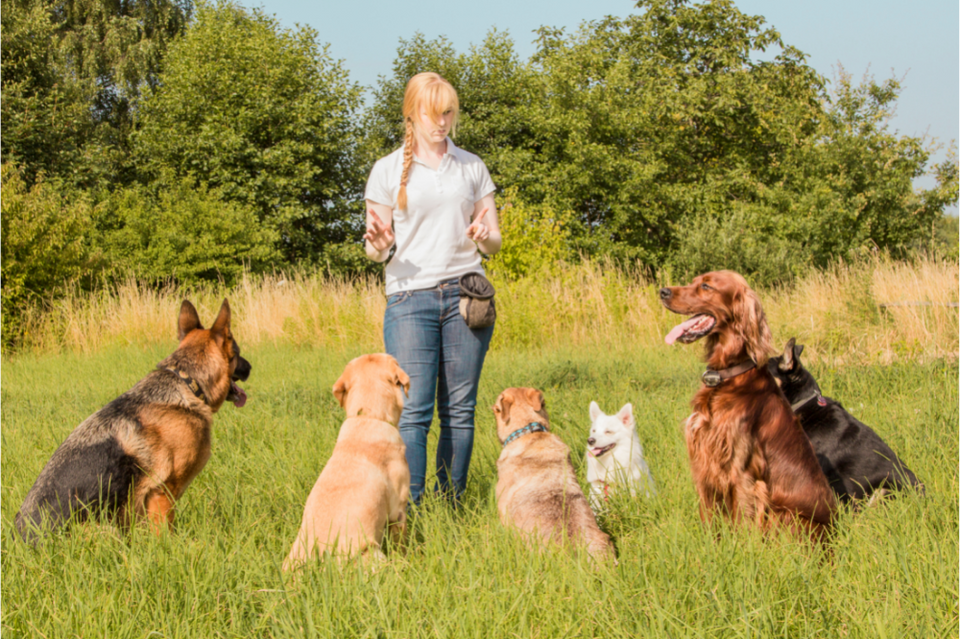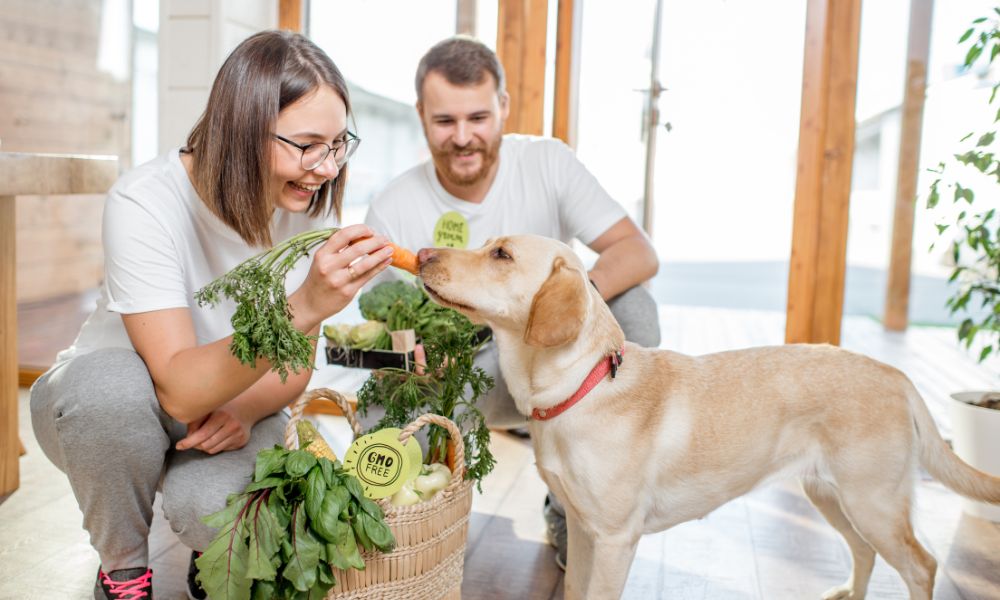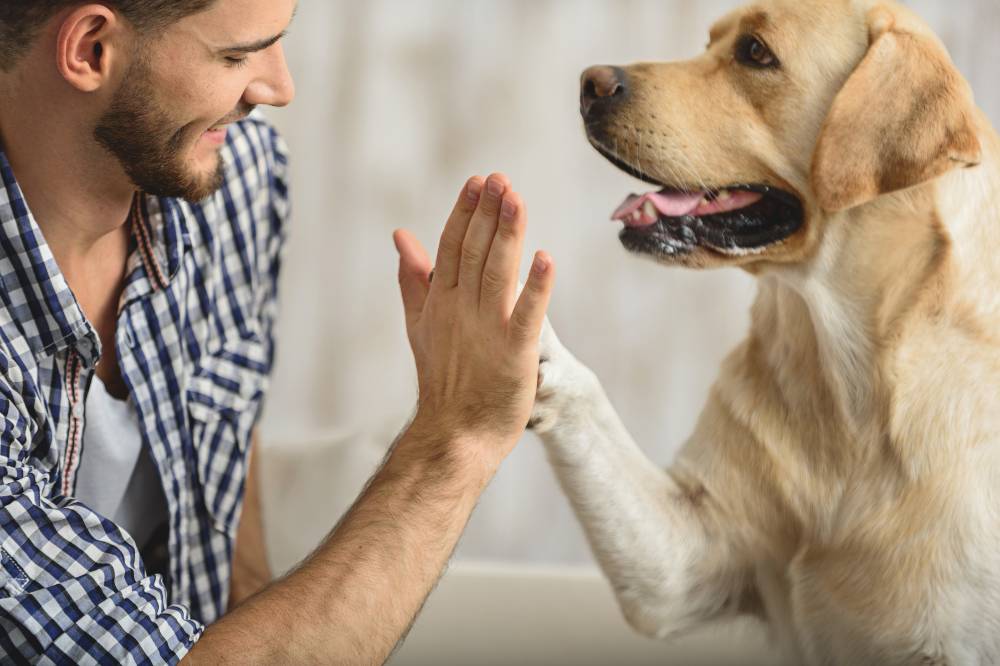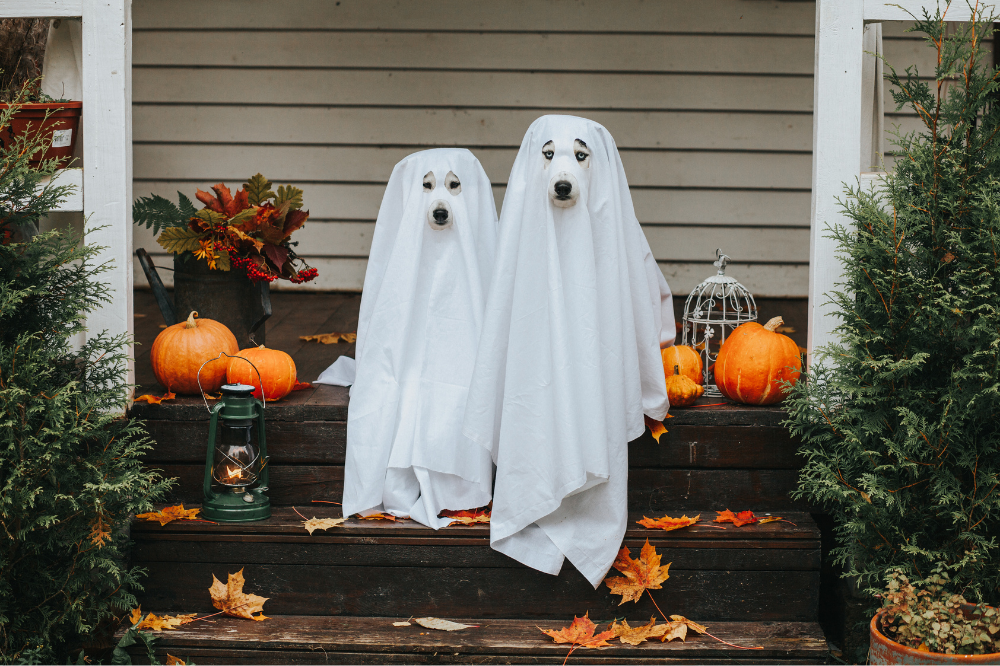
Top 10 Dog Training Tips from Marlie’s Corner

Here, we bring you the Top 10 Training Tips from Marlie, our Chief Product Tester, and her human, Dave — founder of Paw.com.
Meet the Trainers
Holly Blakney started out at 13 competing with dogs in fields like obedience and agility, eventually wanting to be an actor. She booked her first job on a shoot because her agents and the casting directors knew that she had experience with dogs and there were going to be dogs on this project. What most struck her on set was how not well all of the dogs were treated by their handlers and trainers. Since she already had been training animals, she offered her services, at which point she found out that there were only two other companies providing trained animals in the region, and so her career providing animal performers for film and TV began.
Nicole Ellis trains service, therapy, working, and pet dogs, as well as trains her horse and, in the past has trained tigers and bears — oh my. She has also been featured on the Amazon Prime series The Pack. Currently both of her dogs do regular film and TV work, with one of them featured as Rebel Wilson’s dog on the ABC reality grooming series Pooch Perfect, and the other recently cast as a very adorable skunk.
Kiley Kelly began her path into training after being bitten by a dog at only four years old. The dog had to be put down, but Kiley’s reaction to this made her even more compassionate and empathetic toward all animals. She eventually went into rescue, where she encountered a trainer who was teaching the rescuers how to calm the dogs down through the leash. This was her light bulb moment when she realized how she could actually save dogs, so she went to training school and never looked back.
Top 10 Dog Training Tips from Trainers
1. Stick with the basics
Holly reminds us that no matter how well-trained your dog is or what field or tricks they’re specializing in, always take a little time every day going over the basics, like sit, leave-it, down-stay, and come. Also keep playing “the name game,” so that your dog will consistently hear their name as their signal to focus on you. Repetition and reinforcement are key in instilling good behavior in your dogs.
2. Train yourself, too
Kiley stresses the importance of training yourself to train your dog, especially if you’re going to have a large, powerful breed that you’ll need to control in all kinds of situations. If you haven’t had a lot of experience with dogs or you are going to adopt a power breed, find a trainer who specializes in training humans to train their dogs. The extra confidence you gain will make all the difference.
3. Keep it short

Nicole suggests training sessions in 10 to 15 minute increments so that dogs don’t become bored or fatigued. You can actually get a lot done in this time, and it’s much easier to keep your dog focused. She also recommends ending training sessions on good note — wait for a moment near the end of the training period when your dog successfully repeats a skill, completes the first step of a new skill, or otherwise behaves in a way you approve of, then give them rewards and praise before ending the session.
4. Keep them focused
Another important thing that Nicole stresses is the need to keep your dog focused during training. Some dogs in particular might have more trouble than others not being distracted by everything, so using the name game to get them to look at you or teaching them “touch,” where they touch an object with their nose, will hold their attention. If your dog really has trouble focusing, a training platform will also help. Elevating them above the ground reduces distractions. As Nicole points out, there’s a reason that lion tamers use platforms in their acts.
5. Don’t humanize your dogs
Kiley points out a big cause of problems people can have with their dogs in general and in training. When we humanize them, we fail to understand their thinking and their needs, and we can also confuse them. Humanizing happens when we attribute typical human emotions, attitudes, and views to our dogs, like insisting that Fifi is upset today because she doesn’t like Tuesdays, or dressing our dogs up in costumes and giving them birthday parties. Dogs are concerned with what’s happening in the here and now, and humans have to learn how dogs think and how to let dogs be dogs. It may seem like the ultimate in affection to give them hand-outs from the table or let them sleep in our beds, but it’s not. Instead, it will ensure that your dog has no boundaries and doesn’t follow any rules. Speaking of which...
6. Create boundaries and give leadership and structure
Kiley also notes the importance of creating a regular structure for your dogs, because without it they can become very anxious. If walkies and dinner happen every day at around the same time, your dog will know to expect them then, whereas if they happen at random times, your dog will never know when to expect them, and so may exhibit behavior like pacing aimlessly, scratching at doors, or constantly trying to get your attention. Create boundaries through leadership by training your dog to understand that they can get what they want, but only once they’ve given you what you want.
7.Take it slow

Both Kiley and Nicole stress the need to never rush things when it comes to training a dog, especially when exposing them to new experiences. If you’re introducing them to a new dog, never have them meet face-to-face. Let them sniff each other’s butts first, then immediately take them on a long walk together, with the dogs on the outside. This will get them to focus on the walk while still being aware of each other’s scent and presence. The same is true of things like bringing a new baby home — if at all possible, bring something with the baby’s scent on it into the home first. Thrusting a dog into a new experience is the best way to make them fear it immediately. Let them explore it and warm up to it in their own time.
8. Don’t forget your older dog!
Another of Nicole’s tips: If you have two dogs and you’re training the new one, don’t leave the first dog out of things. They may not need to learn the basics, but you can let them participate, and they may even appreciate the opportunity to help you teach their new sibling. Even if they don’t take part in training, they can sit next to you and watch, and you can reward them intermittently for being calm and relaxed. Ultimately, this will create positive associations with the new dog in their mind, which is a good thing — “When I’m calm around the other dog, I get treats.”
9. The ten treat trick
This is Holly’s secret for instilling good behavior in your dogs without it being a constant training session. You start out with ten treats waiting every day, and then you give your dog one when they do something that you want them to do but which you never asked them to do. For example, if your dog goes and lies down calmly in their spot while you’re engaged in doing something else, give them a treat. Of course, do not make the mistake of rewarding them for doing the wrong things, like barking or jumping on people.
10. Ending leash pulling

This is one of the most common issues pet parents have with their dogs, and Kiley recommends the gradual approach to training your dog out of it. Start with them on the leash in the home, with no distractions, and just walk them around inside. They probably won’t feel any incentive to pull, so this is all about getting them used to hanging out next to you, on a relaxed lead. Once they’ve gotten this, then move out into the yard, if you have one, or an enclosed courtyard or other area separate from public sidewalks. Once your dog can walk with you through both places without pulling, it’s time to go outside for a real walk. Repeat the indoor exercise as necessary until your dog stops pulling.
Share this article
written by


